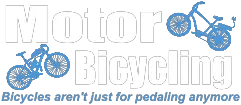Yes,
I had thought that the more intact the Harley was the better in terms of passing through the powers that be. I figured that if the Harley was intact from rear wheel to head tube including serial numbers and had both engine and transmission as part of that unit it would be best and perhaps also make putting it all together as a cyclecar an easier proposition.
I like several things about that Darmont. The front end I'm envisioning on my machine is less vertical than most and the Darmont, too, is a more rounded look. I believe my canoe stern would stick out less than what they did and their's does not look bad, so OK on that. I very much like how the rear section hinges up behind the seat. If I did that then my whole drive train would be easily accessible both for inspection and maintenance. Foreward of the seat would give access to a bit of stowage for groceries, tool kit and perhaps the gas tank.
I had been thinking before that I would need more depth for comfortable seating and saw an answer to that problem in one of the Morgans which had a kind of "stepped" body. I can see doing that so that the stepped portion was from the seat forward... in other words a dropped down section of perhaps six inches and inset from the gunnels six inches or so on each side. The lines of the body would remain the same in other words and the the body line would still flow along the lines of the gunnel.
I can also see that having the front axle run under the forward part of the copper boiler "radiator" cowling would help to keep the overall length manageable... as on the Darmont where the axle is under the 'nose' instead of ahead of it as with many of the period cyclecars, including the Morgan or at least most models of the Morgan. I won't have an exposed engine sitting out front.
Much to think about, but also much time lies ahead for doing the thinking and 'creative staring'. Your photos have been very helpful and I thank you for that. Merci!
SB






